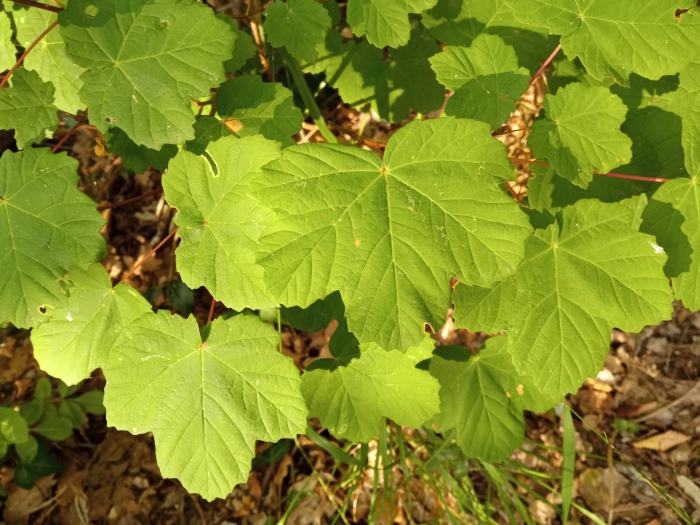Italian Maple
(Acer opalus)
Italian Maple (Acer opalus)
/
/

Josep Gesti
CC BY-SA 4.0
Image By:
Josep Gesti
Recorded By:
Copyright:
CC BY-SA 4.0
Copyright Notice:
Photo by: Josep Gesti | License Type: CC BY-SA 4.0 | License URL: http://creativecommons.org/licenses/by-sa/4.0/ | Rights Holder: Josep Gesti | Publisher: iNaturalist | Date Created: 2023-08-06T08:55:12-07:00 |
























Estimated Native Range
Summary
Acer opalus, commonly known as Italian Maple, is a medium-sized deciduous tree native to the Mediterranean region, including the hills and mountains of Europe and northwest Africa. It typically grows up to 66 feet tall with a trunk up to 3 feet in diameter. The Italian Maple is characterized by its glossy green leaves that turn a striking yellow in the autumn, adding seasonal interest to the landscape. It produces inconspicuous greenish-yellow flowers in spring, followed by winged seeds known as samaras.
Italian Maple is valued for its adaptability to various soil types, though it has a preference for calcareous (limestone) soils. It can grow on both stony substrates and well-developed soils, making it versatile for garden and landscape use. It is often used in urban settings for its tolerance to pollution and is also planted as an ornamental tree in parks and large gardens for its attractive foliage. In cultivation, it requires full sun to part shade and moderate water, with good drainage being essential to prevent root rot. While it is not commonly afflicted by serious pests or diseases, it can be susceptible to leaf scorch in hot, dry conditions.CC BY-SA 4.0
Italian Maple is valued for its adaptability to various soil types, though it has a preference for calcareous (limestone) soils. It can grow on both stony substrates and well-developed soils, making it versatile for garden and landscape use. It is often used in urban settings for its tolerance to pollution and is also planted as an ornamental tree in parks and large gardens for its attractive foliage. In cultivation, it requires full sun to part shade and moderate water, with good drainage being essential to prevent root rot. While it is not commonly afflicted by serious pests or diseases, it can be susceptible to leaf scorch in hot, dry conditions.CC BY-SA 4.0
Plant Description
- Plant Type: Tree
- Height: 47-66 feet
- Width: 16-33 feet
- Growth Rate: Moderate
- Flower Color: N/A
- Flowering Season: Spring
- Leaf Retention: Deciduous
Growth Requirements
- Sun: Full Sun, Part Shade
- Water: Medium
- Drainage: Medium, Fast
Common Uses
Low Maintenance
Natural Habitat
native to the Mediterranean region, including the hills and mountains of Europe and northwest Africa
Other Names
Common Names: Italian Maple, Deshojo Maple
Scientific Names: , Acer opalus, Acer bosniacum, Acer hispanicum, Acer hispanicum f. montsiccianum, Acer hispanicum f. montsiccianum, Acer italum, Acer italum f. hispanicum, Acer italum f. opalus, Acer italum f. opulifolium
GBIF Accepted Name: